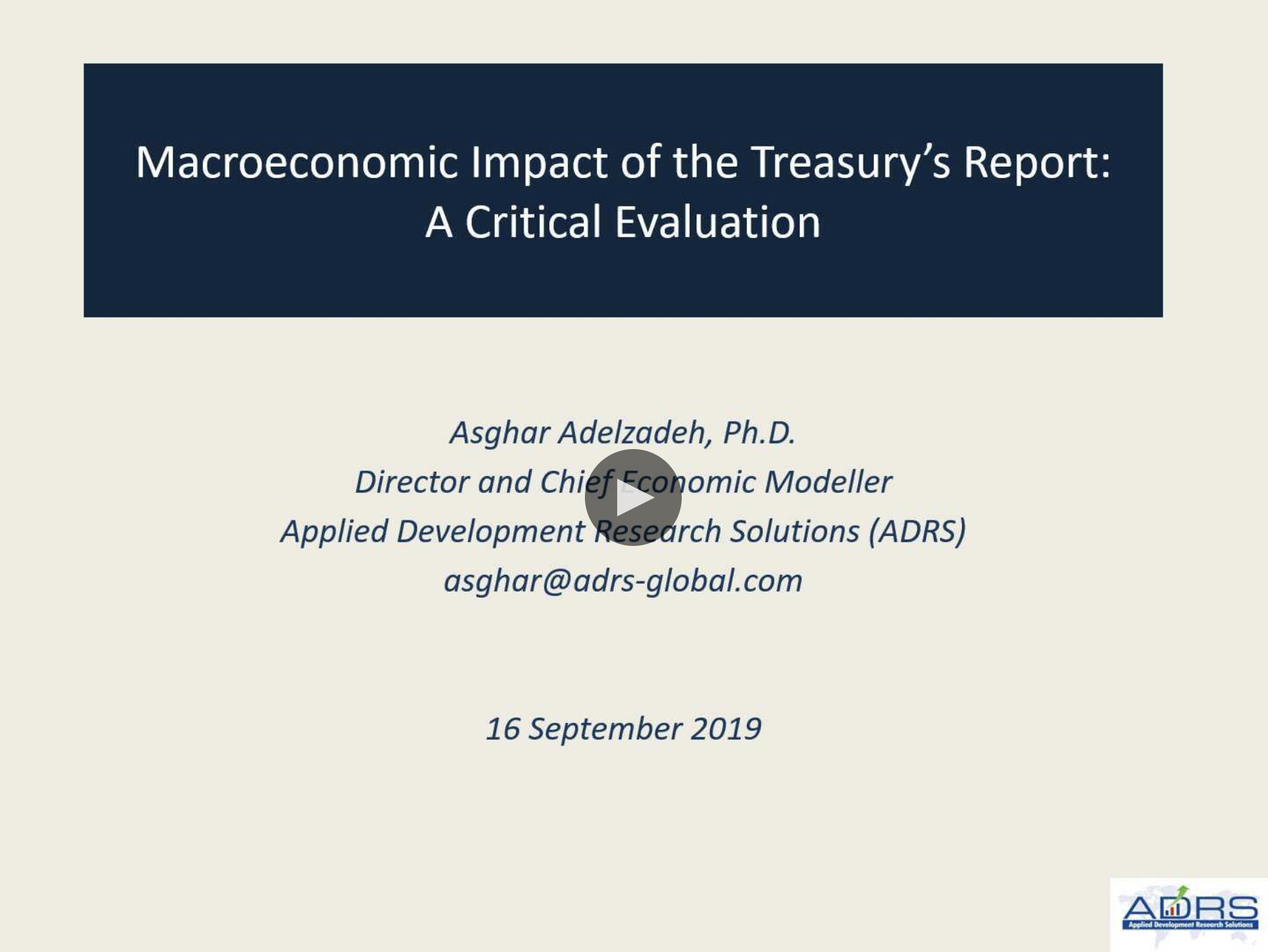Business Day Article, 05 August 2019: At the 25 Years of Democracy conference, President Cyril Ramaphosa stated that his government “is not afraid of new ideas and of new ways of thinking. We want to work with you, and for you to challenge us, to bring added rigour to the work of government.”
Yet the latest state of the nation address and the reappointment of the Reserve Bank governor indicate that the government intends to continue to pursue the current economic policy to achieve the National Development Plan (NDP) targets of doubling the size of the economy, reducing the unemployment rate to a single digit and eradicating poverty by 2030.
Our economic modelling work shows that if status quo economic policy is followed, SA is likely to achieve less than 3% average economic growth, while by 2030 unemployment and poverty rates will be 24% and 27%, respectively. That is, by 2030 SA will be almost as far away from the NDP targets as it is now.
Why is the status quo economic policy likely to fail, and what is the policy alternative? Currently, macroeconomic policy is stuck in an austerity mode characterised by the illusive pursuit of reducing the debt-to-GDP ratio through expenditure cuts and preserving the value of the currency through a relatively high interest rate policy. These two measures have the economy in a low growth and high unemployment trap.
Recently, essential microeconomic policy measures have been advanced to offset the negative impact of the austerity measures and to deliver the NDP’s macroeconomic goals of high growth and employment. But advocating microeconomic policy reforms to overcome the macroeconomic crisis is a convoluted and inappropriate approach. It is like using brain surgery instruments to conduct heart surgery. The patient, in this case the economy, will undoubtedly be compromised.
What is the alternative? Our recent economic modelling exercise for Indlulamithi Scenarios 2030 tested the Nayi le Walk scenario, the best of three scenarios aimed at achieving a socially cohesive SA by 2030. The following economic policy roadmap emerged for the Nayi le Walk scenario.
Current austerity-focused macroeconomic policy gives way to a growth-orientated approach, enabling policymakers to use fiscal and monetary policy for a more robust response to the country’s developmental imperatives. A five-fold increase in general government investment takes place over the next 12 years, while investment by public corporations increases to about R600bn by 2030, with significant funds allocated to building roads, bridges, railways, schools, hospitals, public housing, and other economic and social infrastructure needs of the country. Concurrently, resources allocated to the delivery of social services receive an important boost over the next 12 years, supported by improved growth performance.
In addition, the Reserve Bank actively uses monetary policy to help achieve a growth target of 6% and raises the upper limit of the inflation rate to 8%. Consequently, lower interest rates reduce the cost of borrowing, easing access to credit by the private sector, which help the growth of small and medium-sized enterprises in general and black ownership in particular.
As the demand for skilled labour rises, there is little to no chance that the private sector alone will generate jobs for 6-million unskilled unemployed workers in SA. Therefore, as the government revamps the extended public works programme it gradually becomes the employer of last resort for the unskilled unemployed.
Trade and industrial policy helps corporations grow bigger and more innovative. In return, they focus on sectors that promise the greatest social returns, especially in employment. Since the manufacturing sector has relatively larger spillover effects, the government focuses on this sector for public procurement and local content policies, industrial financing and other measures.
The Public Investment Corporation, which is expected to contribute to the broader socioeconomic development of the country, invests R100bn in the manufacturing sector over the next five years, and the public-private growth initiative invests at least R500bn, mainly in manufacturing, over the next 12 years.
Overall, the Nayi le Walk policy roadmap is designed to boost aggregate supply through increasing the productive capacity of the economy. Aggregate demand is also lifted through the fiscal multiplier and increased household income and expenditure due to a significant reduction in the unemployment rate.
A more comprehensive view of this roadmap and its likely impact on key economic indicators is contained in “The Indlulamithi 2019 Report”.
Further details include:
- an average growth rate of 5.74% for the period 2019–2030;
- an increase in the average investment:GDP ratio to 28;
- a debt:GDP ratio of 30.4% by 2030;
- a reduction in the current unemployment rate by more than half to 12.3% by 2030; and
- a reduction in the current poverty rate by about two-thirds to 13% in 2030.
The Nayi le Walk policy simulation exercise shows that it is possible for economic policy to propel the economy onto a path with structural transformation and economic growth with significant reductions in the unemployment rate and poverty. It requires replacing the current austerity-focused economic policy framework with one that is pro-growth, pro-working class and pro-poor.



